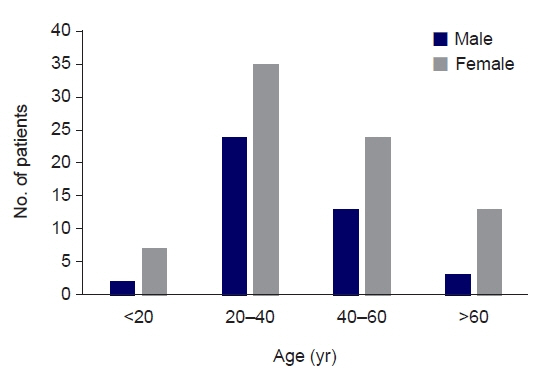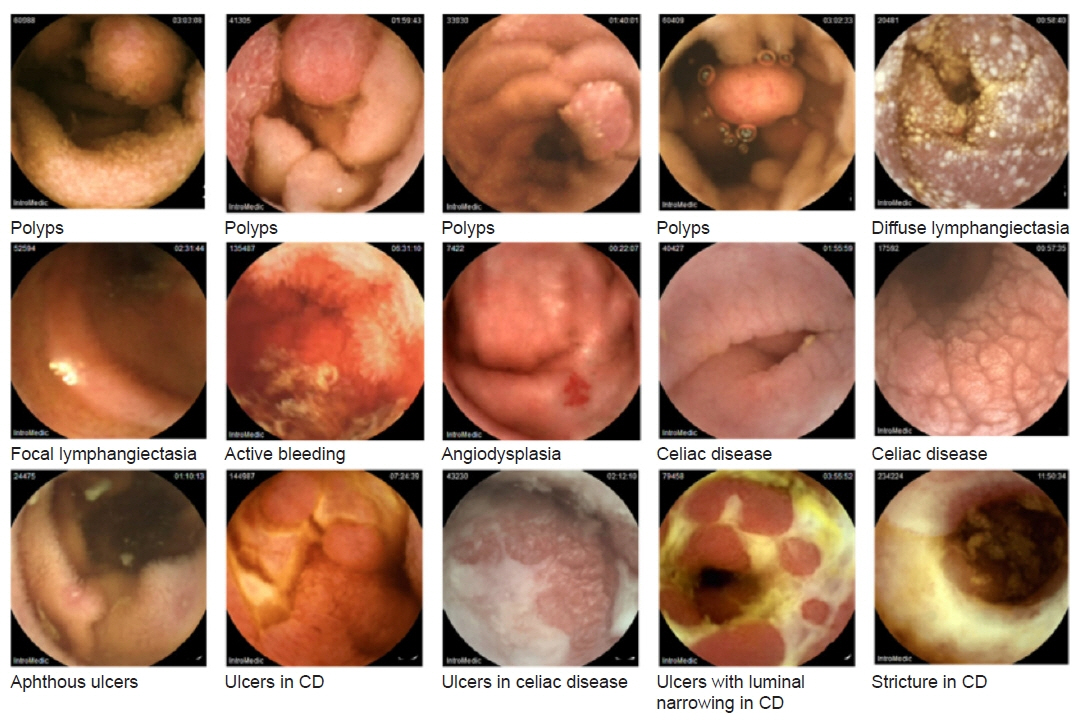Kosin Med J.
2024 Sep;39(3):179-185. 10.7180/kmj.24.116.
Capsule endoscopy in Kazakhstan: a multicenter clinical experience
- Affiliations
-
- 1Department of Pediatrics, Dong-Eui Medical Center, Busan, Korea
- 2Department of Expert Endoscopy and Interventional Radiology, National Research Oncology Center, Astana, Kazakhstan
- 3Department of Endoscopy and Interventional Gastroenterology, Interna Clinic, Almaty, Kazakhstan
- 4The Board of JSC Research Institute of Cardiology and Internal Diseases, Ministry of Health, Astana, Kazakhstan
- 5Captos Co., Ltd., Yangsan, Korea
- 6Department of Pediatrics, Pusan National University Yangsan Hospital, Pusan National University School of Medicine, Yangsan, Korea
- KMID: 2559405
- DOI: http://doi.org/10.7180/kmj.24.116
Abstract
- Background
By analyzing small bowel capsule endoscopy (SBCE) performed in two large hospitals in Kazakhstan, we aimed to explore the characteristics of patients representative of Central Asia and the technical characteristics of SBCE.
Methods
SBCE cases were retrospectively analyzed. A descriptive analysis was conducted on the patients’ demographic data, diagnosis, and clinical symptoms. The results of SBCE, such as the lesions found, transit time and retention rate in the stomach and small bowel, and bowel visualization quality, were analyzed. Complications related to SBCE were investigated.
Results
SBCE was performed in 123 patients. Abdominal pain (81.3%) and chronic diarrhea (66.7%) were the most common symptoms, followed by weight loss (25.2%) and gastrointestinal bleeding (15.4%). The most common disease was Crohn’s disease (52.0%). Definite lesions, such as ulcers, polyps, and bleeding, were identified in 55.3% of patients. SBCE was successfully completed in all cases except for 11 (9.1%). The average small bowel transit time was 4 hours and 28 minutes. Excellent visualization (>75% of mucosa) was reported in 82.5% of patients. No patients experienced complications.
Conclusions
SBCE performed in Kazakhstan showed a high diagnostic yield with high-quality patient selection and no complications.
Figure
Cited by 1 articles
-
Exploring the impact of capsule endoscopy in Kazakhstan: a significant milestone
Jong Yoon Lee
Kosin Med J. 2024;39(3):151-152. doi: 10.7180/kmj.24.134.
Reference
-
References
1. Kaibullayeva J, Ualiyeva A, Oshibayeva A, Dushpanova A, Marshall JK. Prevalence and patient awareness of inflammatory bowel disease in Kazakhstan: a cross-sectional study. Intest Res. 2020; 18:430–7.2. Enns RA, Hookey L, Armstrong D, Bernstein CN, Heitman SJ, Teshima C, et al. Clinical practice guidelines for the use of video capsule endoscopy. Gastroenterology. 2017; 152:497–514.
Article3. Ju J, Oh HS, Lee YJ, Jung H, Lee JH, Kang B, et al. Clean mucosal area detection of gastroenterologists versus artificial intelligence in small bowel capsule endoscopy. Medicine (Baltimore). 2023; 102:e32883.
Article4. Leandri C, Bordacahar B, Ribiere S, Oudjit A, Guillaumot MA, Brieau B, et al. Usefulness of small-bowel capsule endoscopy in gastrointestinal bleeding. Presse Med. 2017; 46:903–10.5. Cheung DY, Kim JS, Shim KN, Choi MG; Korean Gut Image Study Group. The usefulness of capsule endoscopy for small bowel tumors. Clin Endosc. 2016; 49:21–5.
Article6. Robertson AR, Yung DE, Douglas S, Plevris JN, Koulaouzidis A. Repeat capsule endoscopy in suspected gastrointestinal bleeding. Scand J Gastroenterol. 2019; 54:656–61.7. Pennazio M, Rondonotti E, Despott EJ, Dray X, Keuchel M, Moreels T, et al. Small-bowel capsule endoscopy and device-assisted enteroscopy for diagnosis and treatment of small-bowel disorders: European Society of Gastrointestinal Endoscopy (ESGE) guideline-update 2022. Endoscopy. 2023; 55:58–95.
Article8. Kim SH, Lim YJ, Park J, Shim KN, Yang DH, Chun J, et al. Changes in performance of small bowel capsule endoscopy based on nationwide data from a Korean Capsule Endoscopy Registry. Korean J Intern Med. 2020; 35:889–96.
Article9. Tominaga K, Sato H, Yokomichi H, Tsuchiya A, Yoshida T, Kawata Y, et al. Variation in small bowel transit time on capsule endoscopy. Ann Transl Med. 2020; 8:348.
Article10. Yung DE, Robertson AR, Davie M, Sidhu R, McAlindon M, Rahman I, et al. Double-headed small-bowel capsule endoscopy: real-world experience from a multi-centre British study. Dig Liver Dis. 2021; 53:461–6.
Article11. Sidhu R, Chetcuti Zammit S, Baltes P, Carretero C, Despott EJ, Murino A, et al. Curriculum for small-bowel capsule endoscopy and device-assisted enteroscopy training in Europe: European Society of Gastrointestinal Endoscopy (ESGE) position statement. Endoscopy. 2020; 52:669–86.12. Messmann H, Bisschops R, Antonelli G, Libanio D, Sinonquel P, Abdelrahim M, et al. Expected value of artificial intelligence in gastrointestinal endoscopy: European Society of Gastrointestinal Endoscopy (ESGE) position statement. Endoscopy. 2022; 54:1211–31.
Article13. Piccirelli S, Mussetto A, Bellumat A, Cannizzaro R, Pennazio M, Pezzoli A, et al. New generation express view: an artificial intelligence software effectively reduces capsule endoscopy reading times. Diagnostics (Basel). 2022; 12:1783.
Article



